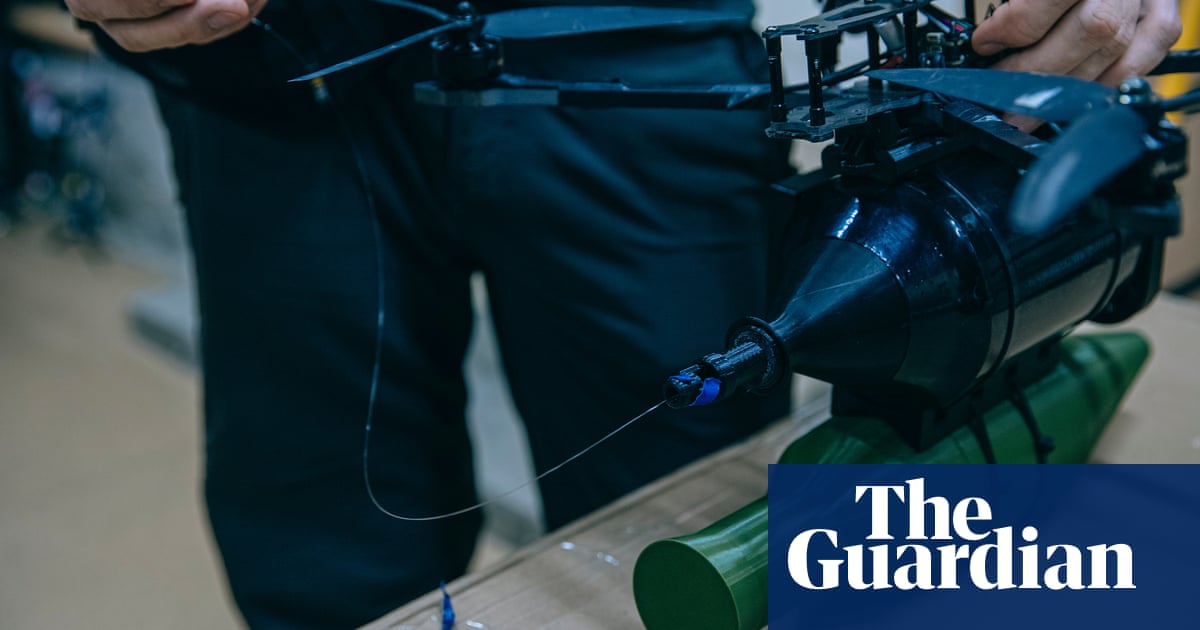At a secret workshop in Ukraine’s north-east, where about 20 people assemble hundreds of FPV (first person view) drones, there is a new design. Under the frame of the familiar quadcopter is a cylinder, the size of a forearm. Coiled up inside is fibre optic cable, 10km (6 miles) or even 20km long, to create a wired kamikaze drone.
Capt Yuriy Fedorenko, the commander of a specialist drone unit, the Achilles regiment, says fibre optic drones were an experimental response to battlefield jamming and rapidly took off late last year. With no radio connection, they cannot be jammed, are difficult to detect and able to fly in ways conventional FPV drones cannot.
“If pilots are experienced, they can fly these drones very low and between the trees in a forest or tree line. If you are flying with a regular drone, the trees block the signal unless you have a re-transmitter close,” he observes. Where tree lined supply roads were thought safer, fibre optic drones have been able to get through.



RR transmitters can be passively triangulated. Following the wire requires someone physically following the line back.
There are a lot of counter options and I’m sure they’ve thought of many. I can think of a couple with a few minutes of thought and it’s not my life on the line.
If the line can be reeled out it can be reeled in.
They could use a smaller drone to send the end randomly elsewhere.
They could have the drone itself detach from the source and reel it towards itself before detonating.